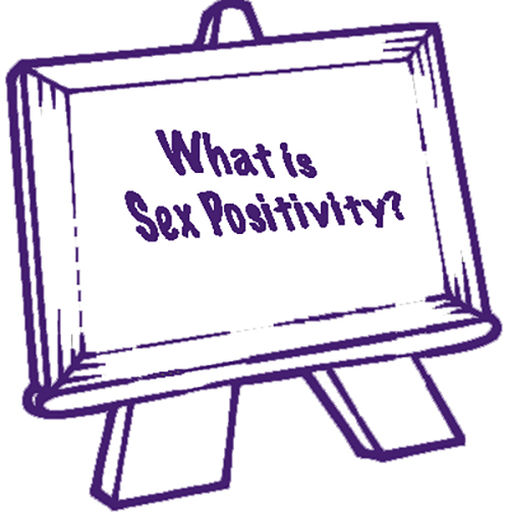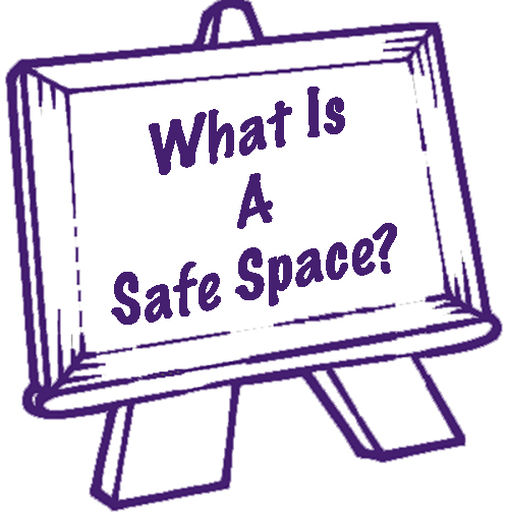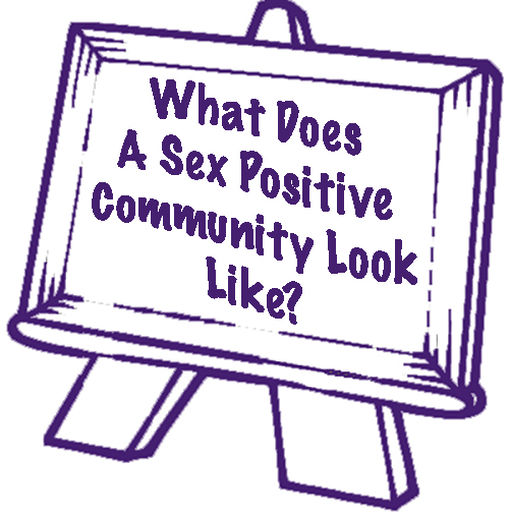I wrote previously about my experience with one of the presentations offered at Toronto’s 2015 Playground Conference, and even though it was many many weeks ago now, I’m still working to process and put into action in my life much of what I took in that weekend. There were many talks and classes I adored, but one of the big ones for me was one called Screwed: The Balance Between Fear, Negativity and Positivity in Safe(r) Spaces – A community conversation presented by Ola Skudlarksa.
First of all, Ola is half a decade-ish younger than me and is doing buttloads of badass shit I only dream about because I’m a lazy fuck. She’s worked with the University of Toronto’s sexual health center, Planned Parenthood, and uhm, yeah, gave an amazing presentation at a sexuality conference last year that I barely got out of bed for. Pretty amazing. Besides all those fancy credentials she was just incredibly easy to listen to. Of the few presentations I attended that I did not like, there were some shared characteristics, mainly to do with the speakers and/or the way the presentation was set up. Ola set her presentation up with a very relaxed conversational tone, like she was just kicked back sharing a beer and ideas with each of us, not at the front of a classroom with a giant sketch pad and jumbo sharpie about to teach something to 50+ strangers. She came off as humble and respectful, not like the mighty authority on something. She was nice. She was friendly. She was the complete opposite of what you think of when you hear the word “teacher”…or maybe I just had a bad childhood. Anyway, I enjoyed her teaching as much as I enjoyed the subject itself.
The subject itself branched into three main points to cover : What is sex-positivity? What is a safe space? What does a sex-positive community look like (or rather, what do we want our communities to look like?)
The class description included questions like “How do we create a sexual space that is safe and kind to those who need to take their time or handle sex in specific and precise ways? How do we promote enthusiasm while allowing people to have hesitations?” The aim was to “create a safe space for people to share hesitations and difficulties they may have had, and to look toward creating a more inclusive scene.”
Ola gave us the foundation statements/questions to get us thinking, and then allowed for most of the time to be taken up by the audience answering these talking points with their own ideas and feelings, which then were listed at the front of the room on her giant sketchpad. Meanwhile, I was furiously taking notes on my phone, knowing this was something I wanted to keep for later. What follows below is a much neater culmination of the notes I took that morning. They are not by any means the complete list of things mentioned by the group, they are mostly things that stuck out to me as something that needed emphasizing, or were things I had not personally considered before. My hopes are that in sharing what I took home with me from this presentation, you may perhaps broaden your own perceptions and understandings of sex-positivity and the community that exists around it, maybe learn something about yourself, maybe see a way your own community could improve and perhaps you’re the one to pass the info along and make that change.
So let’s begin.

Among other things, sex-positivity could be explained as
– Something that breaks the taboo of sex. It’s inclusive of all kinds of sex, and even the absence of sex. It is being unapologetic about sex. It does not hide or shame sex.
– Something that respects, acknowledges, validates, and makes space for differences. It is respecting experiences that are not your own, or that you cannot personally relate to.
– Something that allows us to claim our sexuality as a part of our self. It allows us to call our sexuality a part of the whole. It allows us to place importance on our sexuality without guilt or shame or fear.
– Something that challenges the idea of sex/sexuality as a luxury. It allows us to make room for pleasure, for being sexual, for being ourselves. It allows us the ability to feel pleasure and comfort no matter who we are, where we are in our lives, what our bodies are like, etc. Sex is not exclusive to a certain kind of person, a certain kind of body, a certain kind of lifestyle.
Likewise, sex-positivity is NOT
– Performative. It is not necessarily the flaunting of sexual activity, a show of “all sex all the time”. It’s fine for you to be proud and vocal/visual about your sex life, but doing that and only that is not necessarily all sex-positivity is. It does not push sex on people. It does not tell people that sex is inherently good and no sex is inherently bad. Among other -ists, it is not ableist (ie: “if you’re not orgasming your sex life is broken”) It does not judge ones authenticity, both in their sexualities and their sex life and experiences, by way of how much or what kind of sex someone is having, or how much they show it off. It is not competitive.
A lot of off-the-cuff explainations of what sex-positivity is range somewhere around “being FOR sex”, but obviously that’s not quite it. In a nutshell, sex-positivity is being for allowing everyone to experience sex, if they want to, with respect and dignity, whenever and however they wish. If you are someone who likes to show off your sexy sex life, go ahead! If you’re more private, that’s fine too, your’re no less sex-positive because you don’t update your facebook about the threesome you have every week. If you don’t have sex, that’s also perfectly okay, there is space for you. Sex-positivity lets you place an importance on your sexual self even when you’re sick, poor, overworked, disabled, a parent, a student, unemployed, or anything else society likes to tell you should “come first” or would disqualify you from being deserving of pleasure. Sex-positivity lets you say that your sexuality is paramount to who you are as a person, if you feel that way, and that you don’t have to hide it or put it on hold. Sex-positivity lets you experience your sexuality and sex however fits you best, it tells you that there is no “right way” to feel or do, there is no “right way” for your body to be or act. Sex-positivity is the anti-thesis to slut-shaming. Sex-positivity just lets you do you, whatever that means for you, and gives you the space and respect to do it, even when it’s not what someone else would do.
Before we talk about community, it’s important to talk about and define the concept of Safe Space.

First of all, there is no such thing as a completely safe space, we can only make spaces safer. If someone tells you they have a totally safe space, they are either already lying and ignoring transgressions, or will one day be made a liar. We cannot (in most cases) control the actions of others, there will be mistakes, there may even be deliberate negative actions. What organizers can do is take steps to minimize the likelihood of an incident, and put policies into place for dealing with an incident when it does occur, and that’s what we’re here to outline.
On top of more mainstream understandings of requirements for safe space, such as “don’t victim-blame”, a safer space
– Aims to be inclusionary. No space will ever truly be welcome to all people, but it should be trying, as well as being mindful of language like “welcome to all” and how that impacts persons who it actually excludes. (ex: a mobility-limited event space is not “welcome to all”, it excludes those with mobility related disabilities. Saying your space is welcome to all people while clearly excluding some tells them that they don’t count in your view) It should do what it can to accomodate those who may be excluded from the space for whatever reasons. It should be asking those people what can be done for them specifically to make the space accessible, rather than guessing. It should acknowledge where it may not be accessible to people and make it clear in advertising if a better alternative space cannot be found.
– Aims to be diverse and give minorities and marginalized persons visibility without tokenizing them.
– Acknowledges and tries to moderate the dispersion of power in the space. (ie: does everyone get a chance to speak? Do persons not part of a group often tend to speak for or about that group, how can this be better handled?, etc)
– Allows a member to say “no” without being excluded from the group. There is no shame or stigma or ousting that accompanies a “no”.
– Is a place where the space itself as well as the occupants accept criticism.
– Is a place where the occupants work to protect other occupants. When an incident occurs, the occupants will stand up for one another. If a transgressor does not know what they’ve done wrong and wants an explanation, those who were not hurt can and sometimes should step in, as it is often a burden on victims to have to explain why what someone has done to them is so wrong. However, it’s also a space that doesn’t obligate anyone to comfort a transgressor, not everything is a teaching moment, and not everyone is a teacher. It places priority on the comfort of the hurt.
– Is a place that is consent-driven.
– Is a place that offers space for safe, confidential disclosure. This includes anything, such as identity, relationship statuses, trauma, disability, sex work affiliation, STI statuses. What happens or is said in this space should remain in this space, and only amongst those explicity involved (if there was a private conversation between two people, not only should it not leave the space, it should not be shared with the rest of the occupants in the space)
In addition to these practices, a safe space can decide that allies are not welcome. It’s been said that allyship is not a title one should give themself, rather it’s something the community you help has to bestow upon you. To be truly supportive you must realize that it’s not about you, and that despite all your support you may not be welcome everywhere, and that’s okay. Your support should not hinge on your entry pass to spaces you do not personally identify with.
Along the same lines of accepting criticism, safer spaces should be constantly looking for suggestions to make their space better, and be reaching out for help when it’s needed. A safer space organizer should recognize if they’re experiencing “burn out” and if it will effect their ability to keep their space safe, take steps to remedy this. Likewise, occupants of the space should be offering whatever they can give to help their organizer from reaching a point of burn out. A safer space is in a constant state of co-working to be safer.
Finally, a safer space does not place expectations on it’s occupants to interact or participate. It allows the possibility for interaction (anything from friendly conversation to “hooking up”) without demanding it. An event may have a hope for facilitating a certain level on interaction and should try to indicate this aim in their advertisement, but a person should not be excluded for not meeting these expectations if they do not wish to. As noted above, sex positivity is not being “for sex”, it’s being for someone’s right to decide for themselves how they wish to participate in or out of their own sexuality and sex life.

With these lengthy definitions in mind, we can finally talk about what we hope our sex positive communities will look like. I believe it was JoEllen who tweeted during this talk that much of what our (the audience) ideas of what makes a good sex positive community amount to, are not things that we actually see in our real life communities at the moment. One of the first steps to making change is to define what changes we want to see. We put the hope for them out into the universe for others to see, and if they agree, together we help those ideas move into reality.
The participants in this presentation said that their ideal sex positive community would
– Be a space for open communication.
– Be a space for feeling relaxation, and wholeness. Is comfortable.
– Be a space that is accessible in all ways. Spaces need to be physically accessible, but also financially accessible, and intellectually accessible.
– Physical accessibility is more than just elevators and ramps. Physical disabilities include hearing and sight, among others, which are often overlooked.
– Financial accessibility is often difficult to breach due to the costs of the event/space, the costs of arriving at these spaces, the dates the events are held on, etc, but they can often be mitigated by things like skill shares/trades for services, volunteer shifts in trade for entry, scholarships/sponsorships, etc.
– Intellectual accessibility is often not even thought of, but the lack of can make a space nearly impossible to navigate for some. Those “in the know” tend to throw around certain jargon without thought to whether or not everyone actually understands those words. These spaces can be unwelcoming and intimidating to newbies. These spaces can unintentionally hoist expectations on people to be inherently knowledgable on subjects they may not have had access to outside of the space. People come to these spaces to learn, and that may mean starting from wherever “square one” is for them.
These accessibility issues all play into things like racism, classism, ableism, and more. A sex-positive space should be doing all it can to battle these prejudices.
– Be a space that is welcoming to both the extreme, and the non-extreme. This means, for example, that while flaunting things like non-monogamy and kink are fine, they should not include the shaming of those who are monogamous, or vanilla. There should not be pressure to perform, there should be no contest, there should be no exclusion because you either are or are not participating in what would be considered the more edgy, unconventional, or perverse side of sex. This includes a space for Aces.
– Be a space that is intersectional, acknowledges it’s priviledge, is non-tokenizing of it’s occupants.
– Be a space where it is safe for a person to change their identities, evolve, grow.
– Be a space that can accept criticism, as well as offers a timely and appropriate response to such criticisms or issues brought before it.
– Be a space that offers forms of activism that are not social events, as not everyone has the ability to be “out” to the physical public, or has the ability to attend events.
My final personal addition to the list is that my ideal sex positive community is able to acknowledge that it and it’s occupants have privilege to even exist openly in the first place. There are places in our world where such communities cannot be, there are places in our world where people cannot express their sex positivity or openly be a part of this community. These are not even far-away places, these places and people are right next-door to us. We should be humble and grateful if we are able to organize these communities and be a part of them ourselves. We should encourage these communities growths mindfully. We should not look down on people who are not open and “out” where they cannot be.
I leave you with these questions:
Does your community look like this? If not, what can be done? What can you do?